Essential Guide to the Migration of Wildebeest in 2025
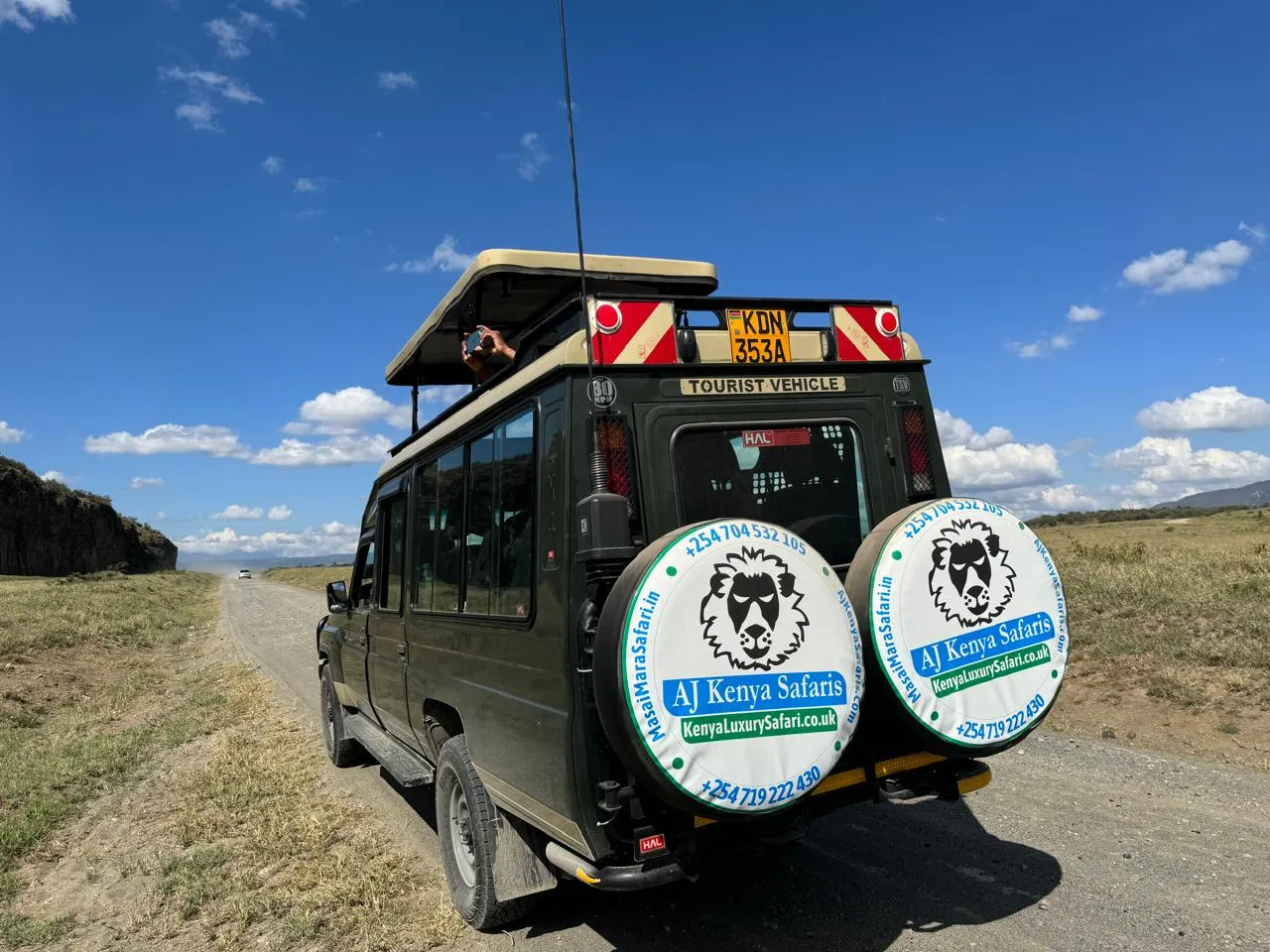
The migration of wildebeest is an annual journey where millions of wildebeest move from Serengeti in Tanzania to Kenya’s Masai Mara National Reserve. Known as the Great Migration, this event is a key ecological phenomenon. This guide covers the timing, locations, and how to plan your 2025 safari.
How to Book Our Masai Mara National Reserve Migration Safari
You can book your annual wildebeest migration safari to Masai Mara National Reserve or northern Serengeti National Park with us now and catch the river crossing. Reach out now for the best Masai Mara-Serengeti wildebeest migration safari via +254-748-258-880 or james@ajkenyasafaris.com or safarioffers@ajkenyasafaris.com to book your safari.
Our Most Booked Masai Mara-Serengeti Wildebeest Migration Safari & Tours
Our Most Booked Kenya Safari Packages 2025 | Price Per Adult Sharing | The Detailed Itinerary |
From USD 27 | ||
From USD 1475 | ||
From USD 1715 | ||
7 Days Safari in Kenya | From USD 4283 | |
From USD 6235 |
Migration of Wildebeest Photos
Key Takeaways
The Great Wildebeest Migration involve over two million wildebeest and hundreds of thousands of other herbivores like zebras and grant’s gazelles traversing approximately 1,800 miles across the Serengeti National Park in Tanzania and the Maasai Mara National Reserve in Kenya, largely driven by the search for new grazing grounds dictated by seasonal rains.
Key phases of the migration include the calving season from January to March in the Southern Serengeti, the perilous river crossings at the Grumeti River from May to July and the Masai Mara River from July to September, and the southward return migration from October to December.
To maximize wildlife viewing and enhance the safari experience, visitors can engage in unique activities such as hot air balloon safaris, walking safaris, and staying at mobile camps that move with the herds; early planning and booking are crucial due to the high demand during peak migration periods.
You can opt to go for a Serengeti wildebeest migration or Masai Mara migration safari, but Masai Mara river crossing is the most dramatic event. Catch the wildebeest in Tanzania around Ngorongoro Conservation area, Northern and Eastern Serengeti and the western corridor for mating season and calving seasons. For Masai Mara, July/Aug is the peak season when the frantic herds of brave wildebeest cross the Mara River .
Essential Guide to the Migration of Wildebeest in 2025
Over 1.2 million wildebeest and more than 200,000 zebras, topis, and impalas participate in the annual wildebeest migration, also known as the Great Wildebeest Migration, making it the world’s largest overland animal migration. The spectacle is graced by over two million wildebeest and hundreds of thousands of other herbivores, will traverse the Serengeti National Park in Tanzania and the Maasai Mara National Reserve in Kenya, creating an awe-inspiring spectacle.
Primarily dictated by East Africa’s seasonal rains, this annual migration is a continuous, circular voyage in search of fresh grazing grounds. Spanning across the Serengeti and Maasai Mara ecosystems, the migration route covers approximately 1,800 miles and includes perilous crossing at the Grumeti and Mara rivers. The Great Migration is not only one of Africa’s seven natural wonders but also one of the last mass terrestrial wildlife movements on the planet, underscoring its ecological significance.
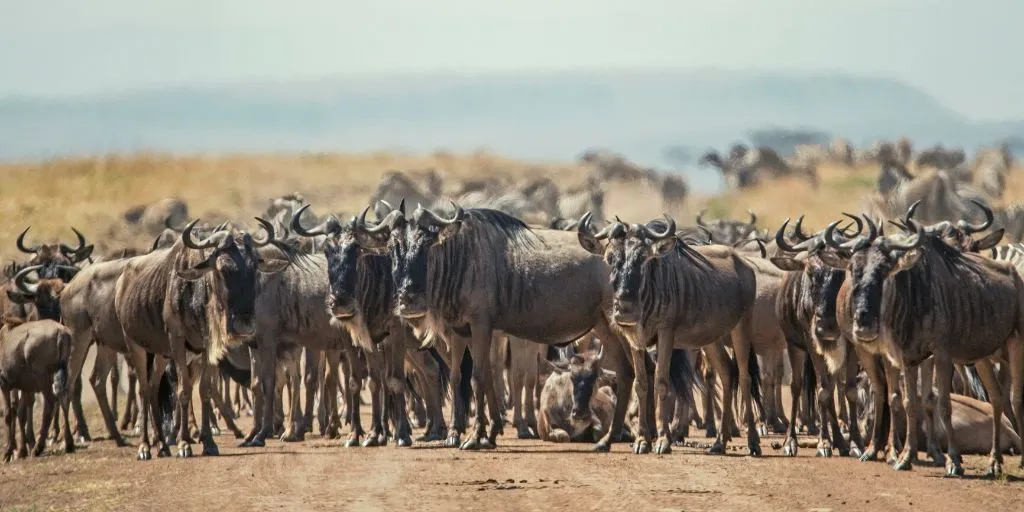
Introduction
Involving millions of wildebeest moving from Tanzania’s Serengeti to Kenya’s Masai Mara, the Masai Mara Migration, also known as the Great Migration, is generally considered one of Earth’s most spectacular wildlife events. This phenomenon is dictated primarily by the search for green grass, driven by seasonal rainfall, making it one of the last mass terrestrial wildlife movements left on the planet.
This guide aims to provide detailed information to help you plan the best possible great migration safari. Whether you’re considering a trip to Kenya or Serengeti National Park, this guide will offer valuable insights into:
- The migration’s timing
- Key locations
- Unique experiences
- Practical tips for booking your safari.
Understanding the Great Wildebeest Migration
Millions of wildebeest and other animals annually move across the Serengeti Plains in a continuous, year-round circular voyage that forms the Great Wildebeest Migration across the Serengeti and Maasai Mara ecosystems. This wildebeests cross involves up to 1.5 million wildebeest, around a million zebras, and many other species, making it the largest overland animal migration in the world.
Driven by the search for fresh grazing plains dictated by seasonal rains, wildebeest migrate primarily to follow the rainfall patterns that create greener pastures – they get to Masai Mara as soon as the rains begin in Tanzania to graze on the short grass plains of Mara. The migration path covers the Serengeti National Park in Tanzania and the Maasai Mara National Reserve in Kenya, making it one of Africa’s seven natural wonders and a significant experience for travelers and wildlife enthusiasts.
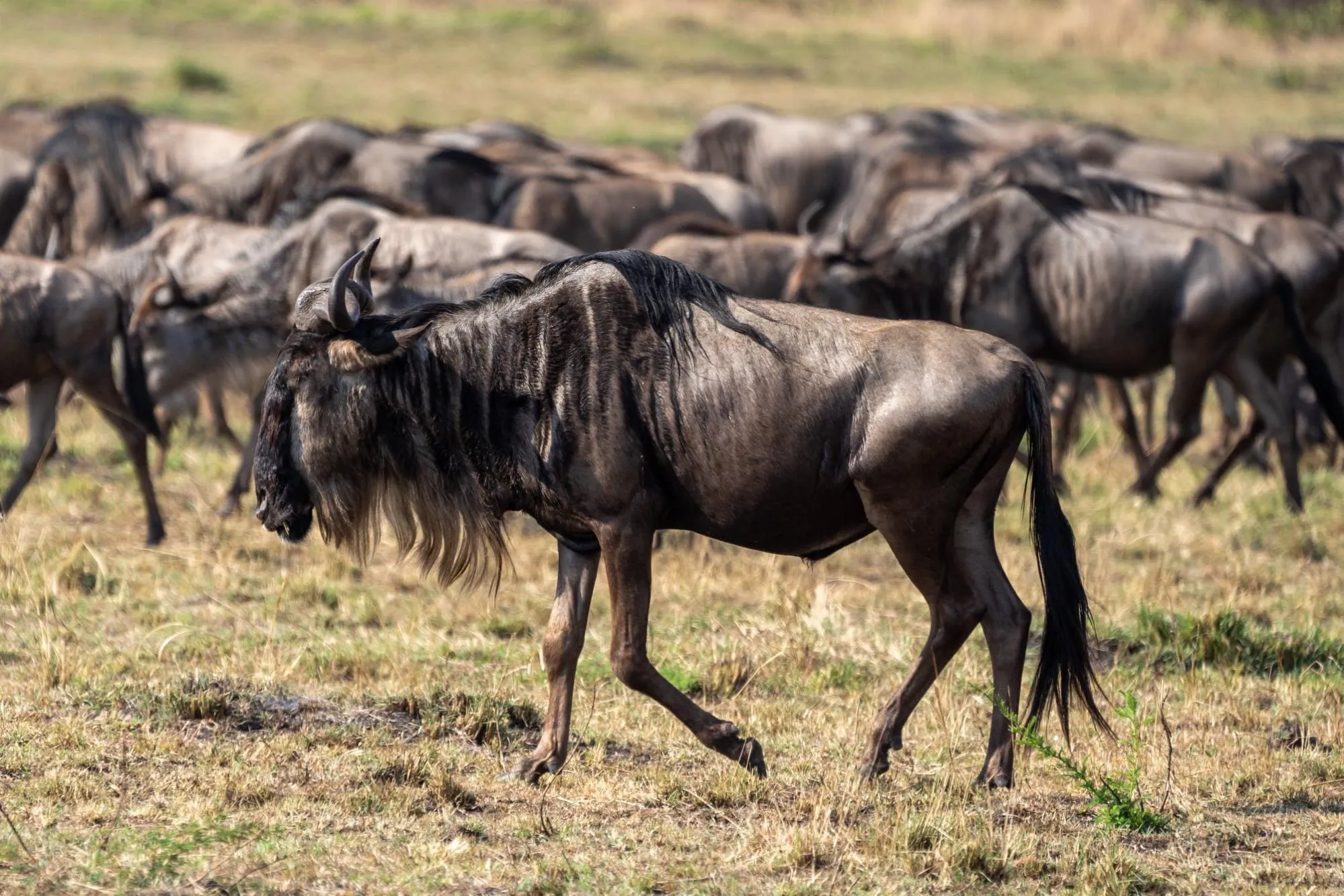
Month-by-Month Breakdown of the Migration
Comprehending the timing of the Great Migration plays a significant role in planning your safari. This section provides a detailed month-by-month breakdown of the migration, highlighting key events such as calving season, crossing, and the return journey to the Serengeti.
From the birth of thousands of calves in the Southern Serengeti to the dramatic river crossing at the Masai Mara River, the migration is a dynamic and ever-changing spectacle. Here’s what you can expect during each phase of the year.
January-March: Calving Season in Southern Serengeti
The calving season, marked by daily births of thousands of wildebeest calves, spans from January to March in the Ndutu region of the Southern Serengeti. This period is particularly remarkable, with over 10,000 wildebeest born each day, creating a vibrant and bustling environment. The birthing season primarily occurs around the Ndutu and Ngorongoro plains.
This influx of newborns attracts numerous predators, including lions and leopards, making it a prime time for viewing predator-prey interactions. The abundance of vulnerable calves ensures that predator encounters are frequent, providing thrilling wildlife viewing opportunities.

April-May: Journey North Through Central Serengeti
Driven by food scarcity and the need to feed their young, the wildebeest herds commence their northward journey from the Southern Serengeti from late March to early April. As the long rains start in April, the herds move in a north-westerly direction, marking the rutting season. This period offers prime game viewing opportunities as the wildebeest funnel through the Serengeti, often forming columns up to 40 kilometers long.
In May, the migration continues with the wildebeest and zebras moving further north in search of fresh grazing grounds, offering excellent wildlife viewing during the low tourism season.
June-July: Grumeti River Crossings
June marks the end of the rainy season and the beginning of the Grumeti River crossing period, a perilous part of the migration route. The Grumeti River in the Western Serengeti is known for its large population of Nile crocodiles, posing a significant threat to the migrating herds. The crossing typically occur between May and July, with late June to early August being the best time to witness these events.
While the Grumeti River crossing is less dramatic compared to the Mara River crossing, they still offer thrilling wildlife viewing opportunities. The Central Serengeti is an ideal location to view the herds during this period.
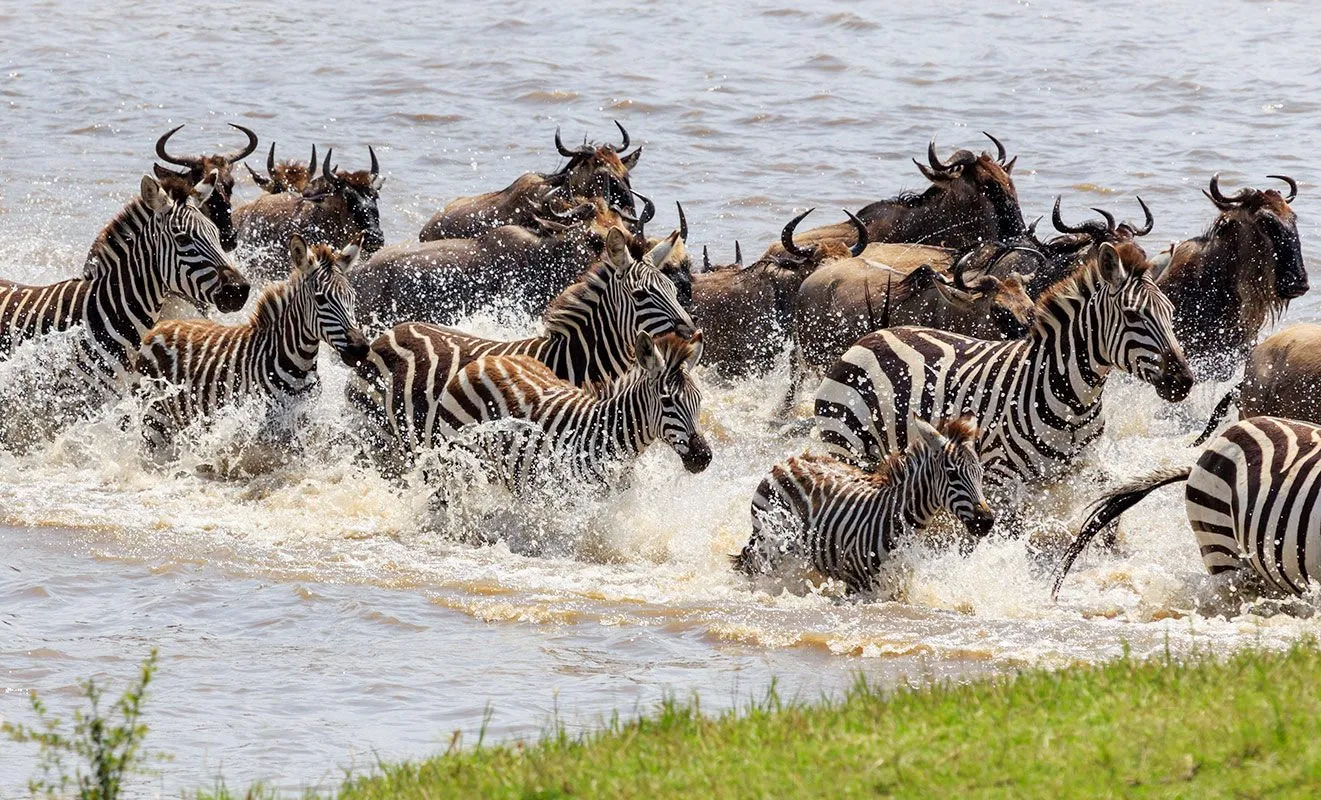
August-September: Mara River Crossings
From August to September, the migration reaches its peak with the dramatic crossings of the Masai Mara River. This period is often considered the most intense and thrilling part of the migration as the wildebeest contend with strong currents and waiting predators, including Nile crocodiles. The Masai Mara crossing is a life-or-death experience for the wildebeest, making it a highlight for wildlife enthusiasts.
The best time to witness the dramatic Mara River crossing is between July and October, with August being the peak month for viewing. Despite the dangers, over one million animals head north, providing a spectacular sight along the banks of the Masai Mara River.
October-December: Return South to Serengeti
By October, the wildebeest herds start their journey back south to the Serengeti, following the rains to find fresh grazing lands. The herds move through western Loliondo and the Serengeti National Park’s Lobo area, with the short rains beginning in November marking their arrival in the north-eastern Serengeti.
During this period, the wildebeest head back into the rejuvenated Serengeti, continuing their circular migration and preparing for the next birthing season. The timing of the rains can be unpredictable, making this phase of the migration equally fascinating and dynamic.

Key Locations to Witness the Migration
The Serengeti National Park and Masai Mara National Reserve are the primary regions to observe the wildebeest migration. Key locations within these areas offer prime viewing opportunities for different phases of the migration, including the dramatic river crossings and birthing season.
Whether you choose the Northern, Central, or Southern Serengeti, or the Masai Mara, each location offers unique experiences and perspectives on the migration. Here’s a closer look at the best spots to witness this natural phenomenon.
Northern Serengeti
The Northern Serengeti, particularly along the Mara River, is renowned for its dramatic crossings. The best time to witness the migration in this region is between July and September, with the peak period for the Masai Mara crossing being July and August.
Prime areas such as Kogatende and Lamai offer excellent viewing opportunities during this period, allowing visitors to experience the intensity and drama of the river crossings up close.
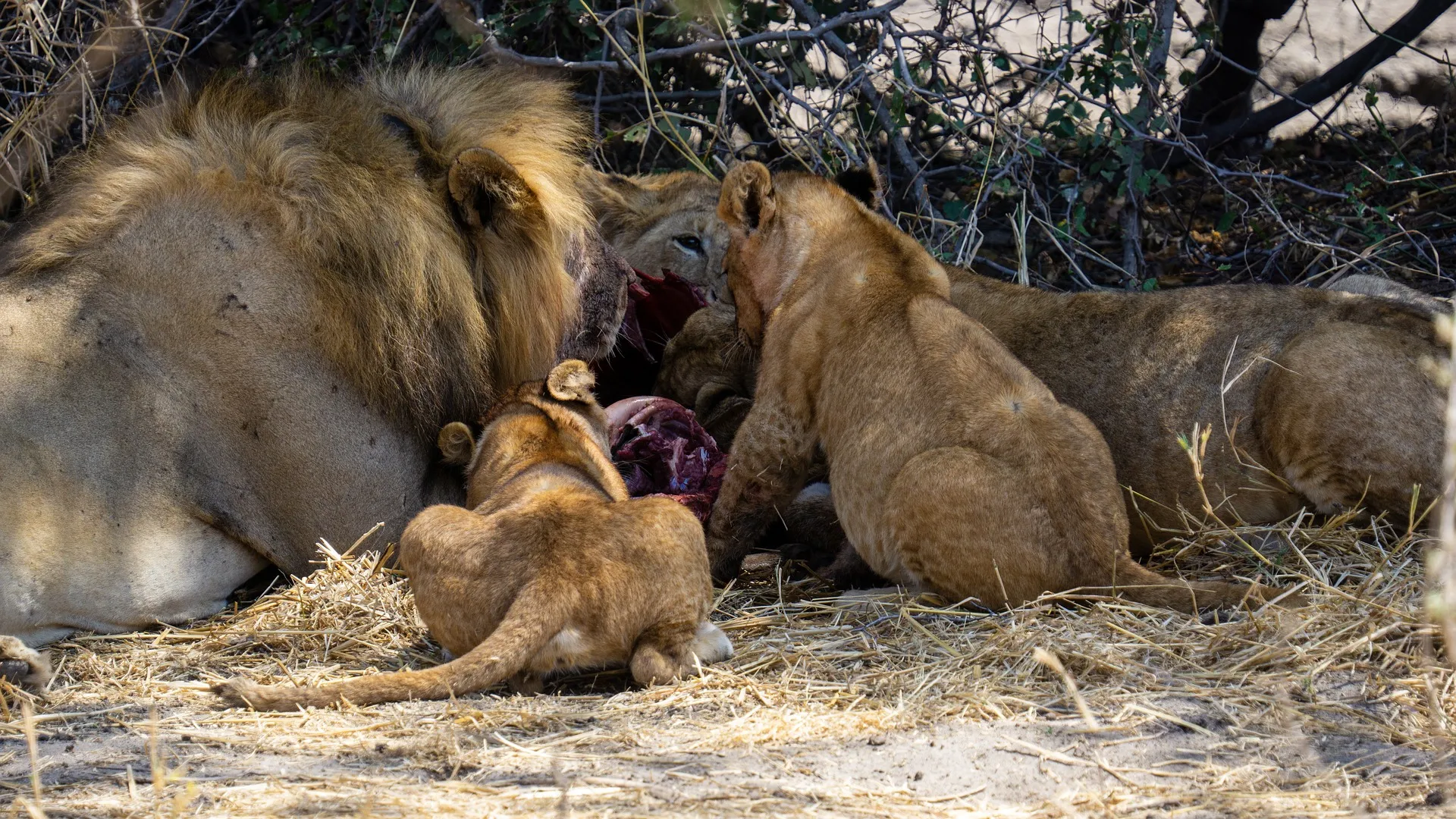
Central Serengeti
The Central Serengeti’s Seronera Valley is a significant spot to see the migration as the herds move north in search of fresh grazing grounds. From April to May, this region hosts large columns of migrating wildebeest, providing excellent wildlife viewing opportunities.
This area offers a unique perspective on the migration, with the herds forming long columns as they journey through the central Serengeti.
Southern Serengeti
The Southern Serengeti’s Ndutu Plains are ideal for witnessing the birthing season, which occurs from January to March. This region is particularly notable during the peak of the birthing season from February to March, where thousands of calves are born daily.
The abundance of newborns attracts numerous predators, making it a prime location for viewing predator-prey interactions and experiencing the vibrant life cycle of the Serengeti.

Unique Experiences During the Migration
Experiencing the Masai Mara wildebeest migration is not just about witnessing the herds move. There are several unique experiences that can enhance your safari, such as hot air balloon safaris, walking safaris, and mobile camps.
These activities offer different perspectives and ways to engage with the migration, providing a richer and more immersive safari experience.
Hot Air Balloon Safaris
Hot air balloon safaris provide an excellent vantage point to witness the wildebeest migration from above. Imagine floating silently over the savannah as the sun rises, casting a golden hue over the landscape. From this serene and unique perspective, you can observe:
- the vast herds below
- other wildlife such as giraffes, elephants, and even lions
- depending on the wind direction, balloon flights may drift over rivers, offering glimpses of crocodiles and hippos below.
This experience often includes a champagne breakfast upon landing, adding a luxurious touch to your safari. The silence and stillness of a hot air balloon ride provide a tranquil way to appreciate the grandeur of the migration, making it a must-do activity during your trip to the Masai Mara or Serengeti.

Walking Safaris
Walking tours offer an immersive experience, allowing participants to closely follow the movements of the herds and observe their behaviors up close. Accompanied by knowledgeable guides, these safaris provide a more intimate and less intrusive way to observe wildlife, making it possible to appreciate the smaller details of the ecosystem that are often missed from a vehicle.
In addition to the thrill of being on foot amidst the migratory herds, walking tours often include guided cultural tours, offering insights into the local Maasai culture and traditions. This combination of wildlife and cultural experiences makes walking tours a unique and enriching way to experience the Great Migration.
Mobile Camps
Mobile tented camps offer flexible accommodation options that move with the migratory herds, ensuring guests are always close to the action. These camps are designed to follow the migration, providing an authentic safari experience with the comfort of modern amenities such as comfortable beds and en-suite bathrooms.
Staying at a mobile camp allows you to be in the heart of the migration, waking up to the sounds of the wildebeest herds and experiencing the constant movement of the animals. This close proximity to the migration, combined with the flexibility and comfort of mobile tented camps, makes for a truly immersive and unforgettable safari experience.

The Role of Climate and Rainfall
The wildebeest migration is largely dictated by climate and rainfall patterns, as the animals respond to seasonal rains and the emergence of new grass. The timing and amount of rainfall can significantly influence the migration journey, making it unpredictable and dynamic.
Climate change has introduced further unpredictability, with more frequent and severe droughts and sporadic flooding affecting the Maasai Mara ecosystem. These changes have led to fewer wildebeest migrating to Kenya and reduced the duration of their stay.
As climate change models predict more frequent flooding and droughts, the future of the wildebeest migration faces significant challenges.
Wildlife Interactions and Ecosystem Impact
The overall health and biodiversity of the Serengeti Mara ecosystem heavily rely on the wildebeest migration. The wildebeest migration benefits the ecosystem in several ways:
- The grazing patterns of the wildebeest allow a variety of flora and fauna to thrive.
- The trampling of the wildebeest helps to break up the soil and promote new growth.
- The wildebeest provide a source of food for predators such as lions and hyenas.
These factors support a diverse range of species, including big cats and other predators.
However, increased human settlements, livestock, and fencing are exacerbating the decline in wildebeest numbers by restricting access to grazing land. These human-induced challenges, coupled with the impacts of climate change, pose significant threats to the sustainability of the Great Migration and the ecosystems it supports.

Planning Your 2025 Wildebeest Migration Safari
To witness the wildebeest migration, planning a safari necessitates careful consideration of timing, locations, and accommodations. The best time for budget travelers to visit is from April to May, due to cheaper rates and fewer tourists. To secure the best rates and availability, it is advisable to book your safari at least a year in advance.
Travel insurance that covers trip cancellations or delays is also recommended to protect your investment. Whether you opt for permanent lodges or mobile tented camps, understanding the specifics of each option will help you choose the right safari package to suit your preferences and budget.
Best Times to Visit
When the migration is at its peak, from July to October are the optimal months for visiting the wildebeest migration. This period offers the best chances to witness dramatic events such as the Mara River crossings. However, off-peak months like April, May, November, and December provide a more tranquil safari experience with lush green landscapes and fewer tourists.
Visitors should be prepared for cooler weather during the off-peak months due to the rainy season, particularly during early morning and late afternoon game drives in November. Aligning your visit with specific migration events that interest you will enhance your safari experience.
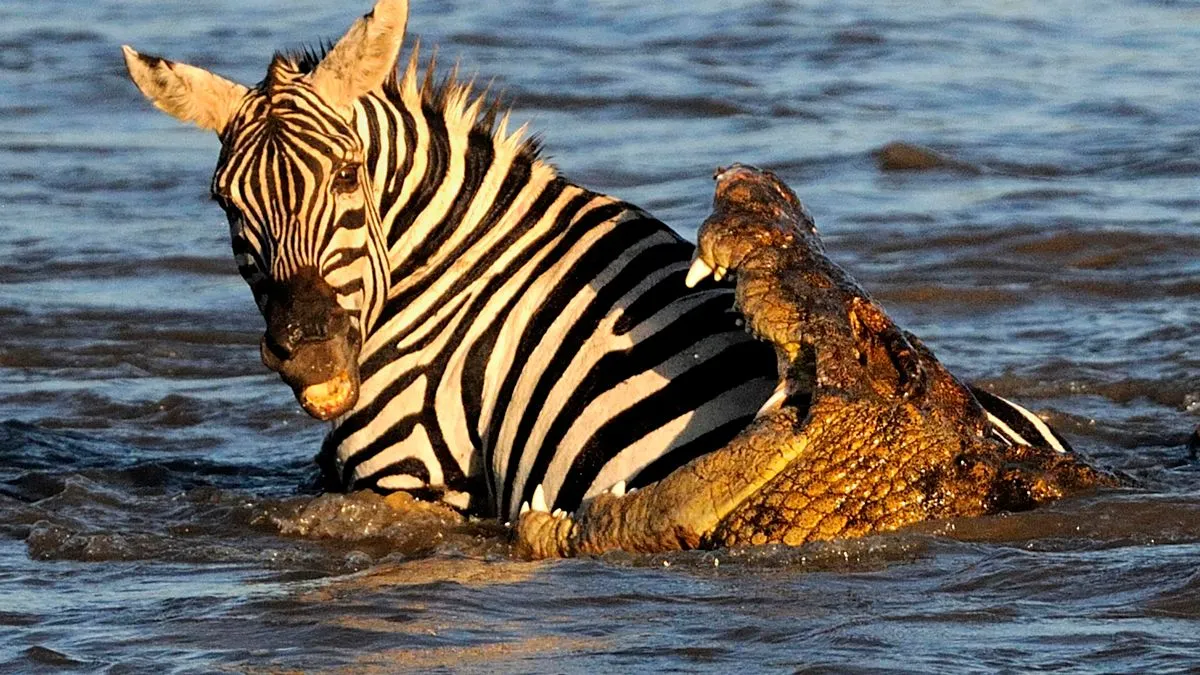
Booking Tips
To secure prime viewing accommodations near key migration points, early booking is crucial. Leveraging the knowledge of Africa Safari Experts can provide custom-tailored safari experiences, ensuring you get the most out of your trip.
Consulting with experienced safari planners can help you navigate the complexities of booking and offer valuable insights into the best times and places to visit, making your safari planning process smoother and more enjoyable.
Choosing the Right Safari Package
Your preferences, budget, and desired experiences are determinant factors in choosing the right safari package. Luxury safari packages often include private guides and customized itineraries for a more personalized experience. Budget-friendly packages might include group tours and shared accommodations but still provide excellent wildlife viewing.
Customizable safaris cater to individual travel preferences and can include unique activities like hot air balloon rides and romantic bush dinners. Whether you opt for a luxury, budget, or customizable package, ensuring it aligns with your interests will make your safari experience more fulfilling.
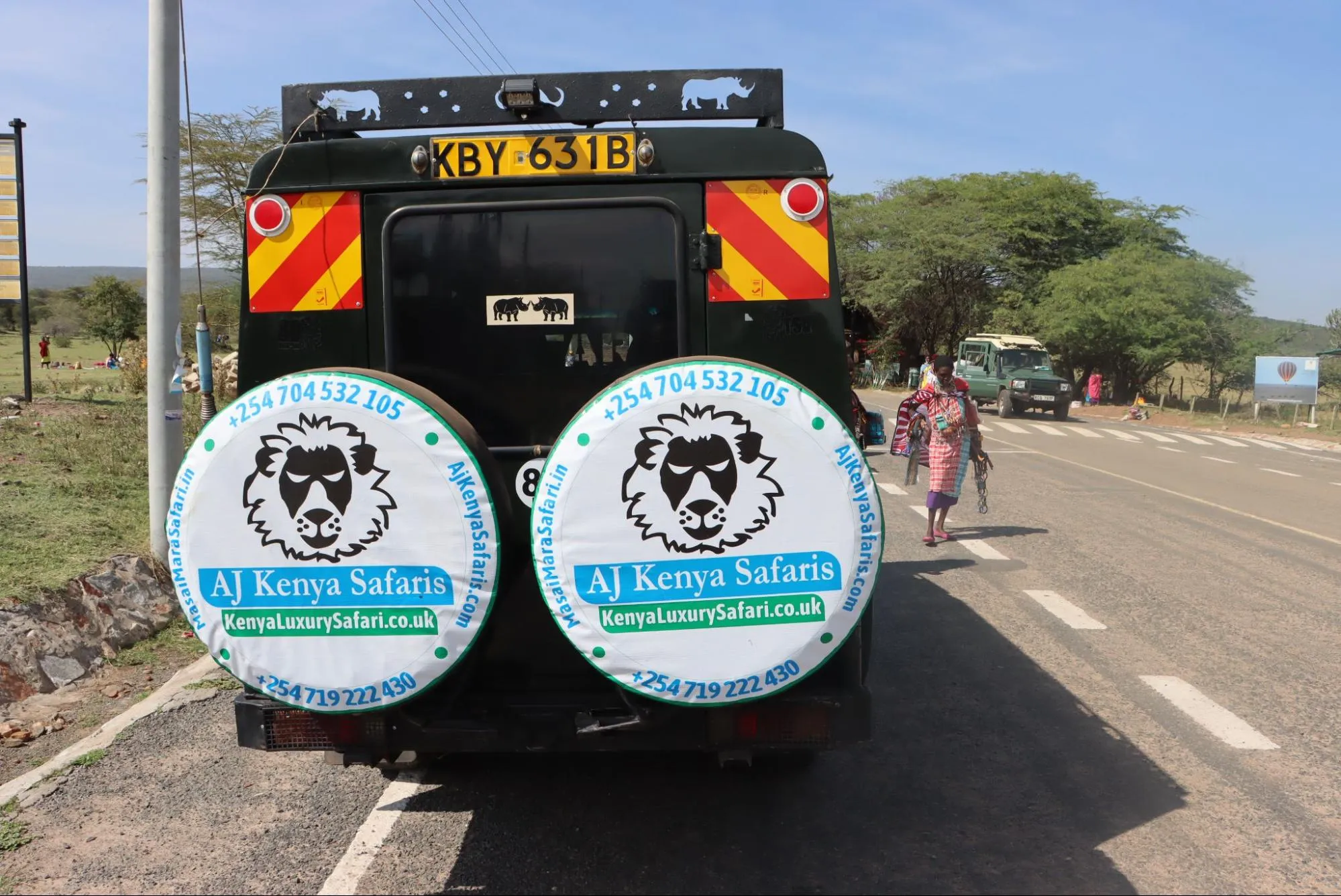
Summary & FAQs
The Great Wildebeest Migration is a remarkable natural phenomenon that offers unparalleled wildlife viewing opportunities. Understanding the migration’s timeline, key locations, and unique experiences helps you plan an unforgettable safari. From witnessing dramatic river crossings to newborn calves to enjoying serene hot air balloon rides, there are numerous ways to experience the migration.
As you plan your trip, consider the best times to visit, secure prime accommodations early, and choose a safari package that suits your preferences. The Great Migration is not just a journey of the wildebeest but a journey of discovery for those who witness it. Embrace the adventure and let the magic of the Serengeti central or western corridor and Maasai Mara unfold before your eyes. Watch that one brave wildebeest cross the Mara river as the herds blindly jump into the water to signal the end of Serengeti migration and starts of Masai Mara migrations.
1. When is the best time to witness the Great Wildebeest Migration?
The best time to witness the Great Wildebeest Migration is from July to October, with the peak Mara River crossings happening in August. You can also see the wildebeest at Masai Mara plains up to Oct. For Serengeti wildebeest migration, the ideal time to visit is from Jan to March during the birth season in Tanzania’s Serengeti National Park and Ngorongoro Conservation Area
2. What are the key locations to see the migration?
The key locations to see the migration include the Serengeti-Masai Mara ecosystems of Northern Serengeti (Mara River), Central Serengeti (Seronera Valley), and Southern Serengeti (Ndutu Plains) for Serengeti migration. These areas offer prime viewing opportunities for witnessing this natural phenomenon. For Masai Mara, you can catch the wildebeest crossing the Mara river and see them grazing in the short grass plains of Mara up to early November.
3. What unique experiences can I enjoy during the migration?
During the migration, you can enjoy unique experiences such as hot air balloon safaris, walking tours, and mobile camps that move with the herds. Don’t miss out on these extraordinary opportunities to witness the natural spectacle in the natural world of the Masai Mara-Serengeti ecosystem. Expect to see the predictors like lion, leopard, cheetah, and wild dog hunt in the short grass plains of Masai Mara until early November.
4. How does climate change affect migration?
It is generally believed that climate change affects migration by causing more frequent droughts and flooding, making the migration journey unpredictable and potentially reducing the number of migrating animals. The climate change will the see animals head north, western corridor, central part, and
5. How far in advance should I book my safari?
To secure the best rates and accommodations, it’s advisable to book your safari at least a year in advance. This applies to every Tanzania and Kenyan safari or even a visit to any other East Africa country or national park.
